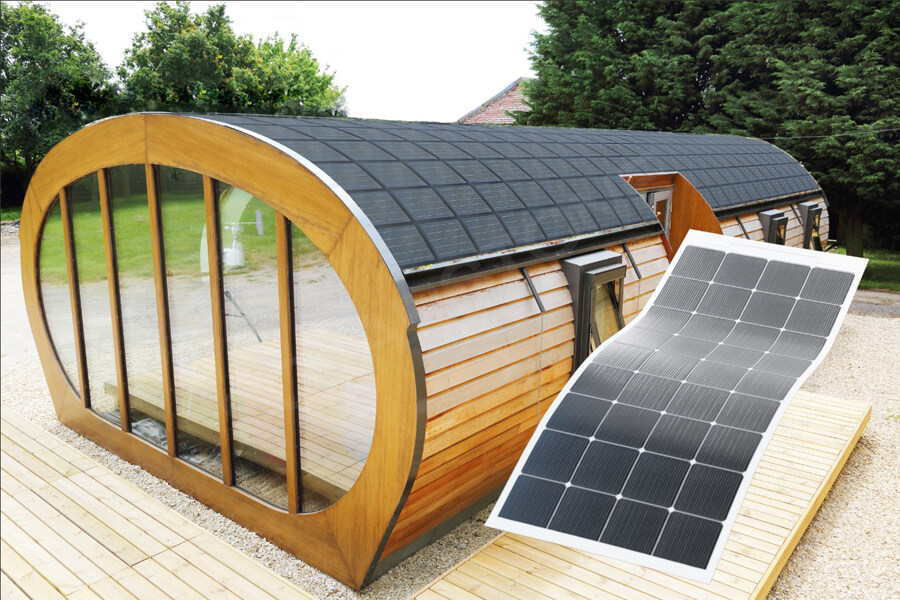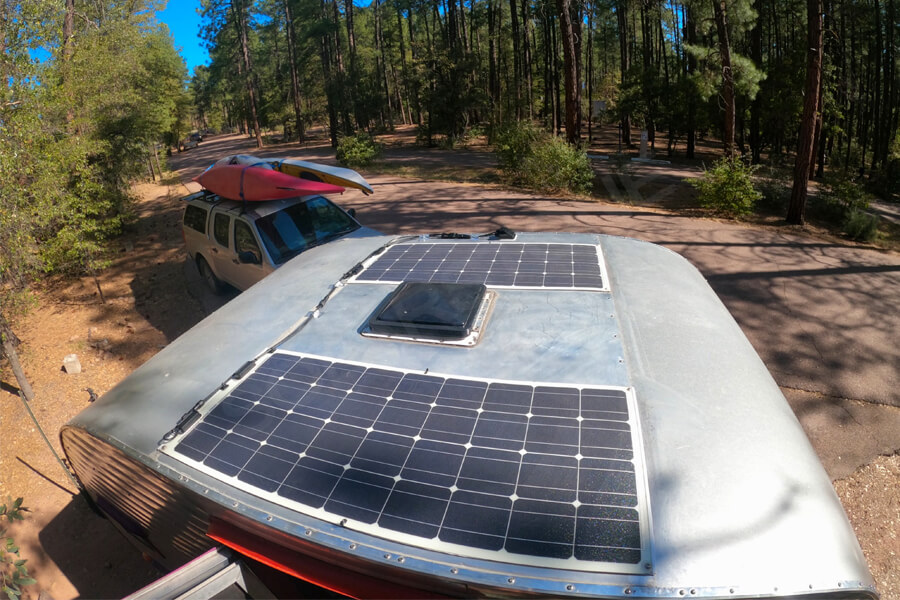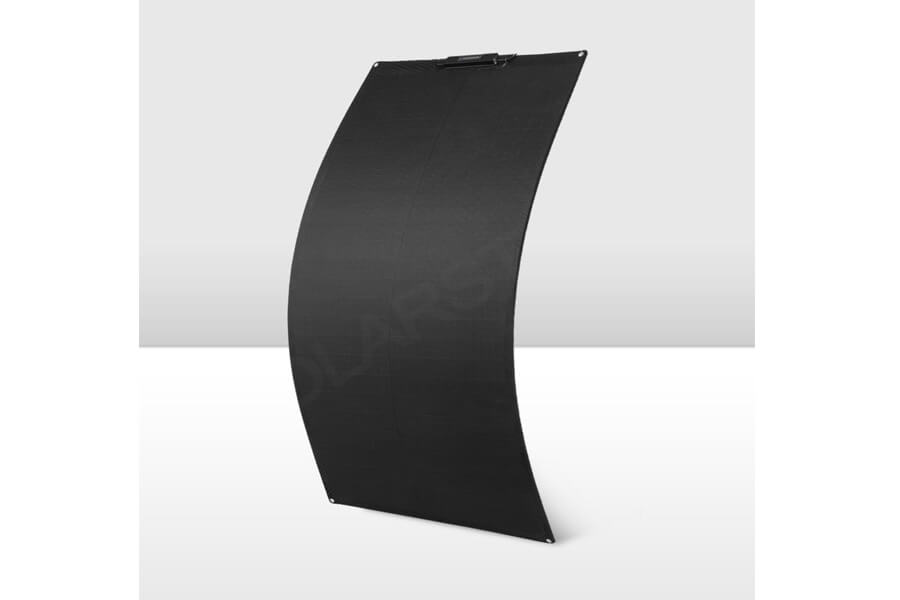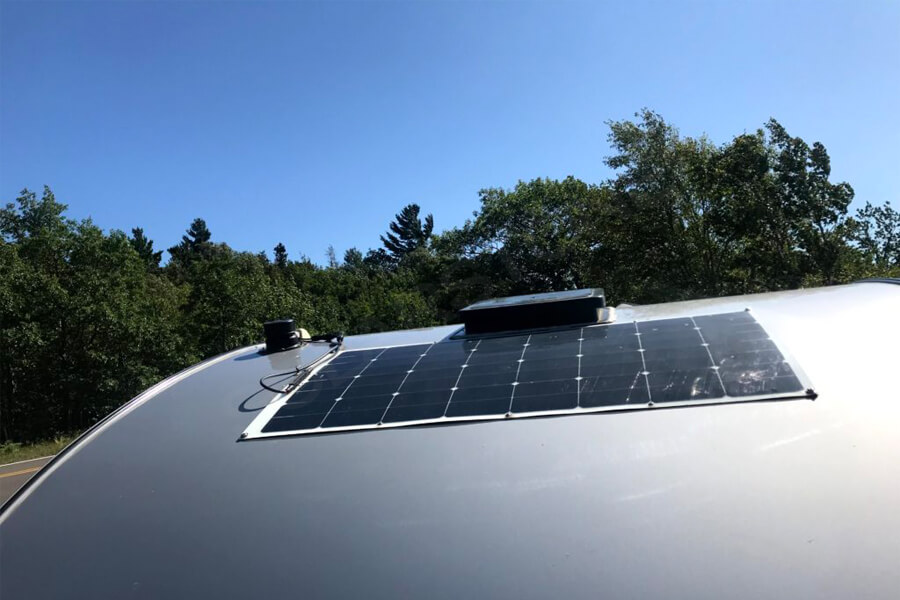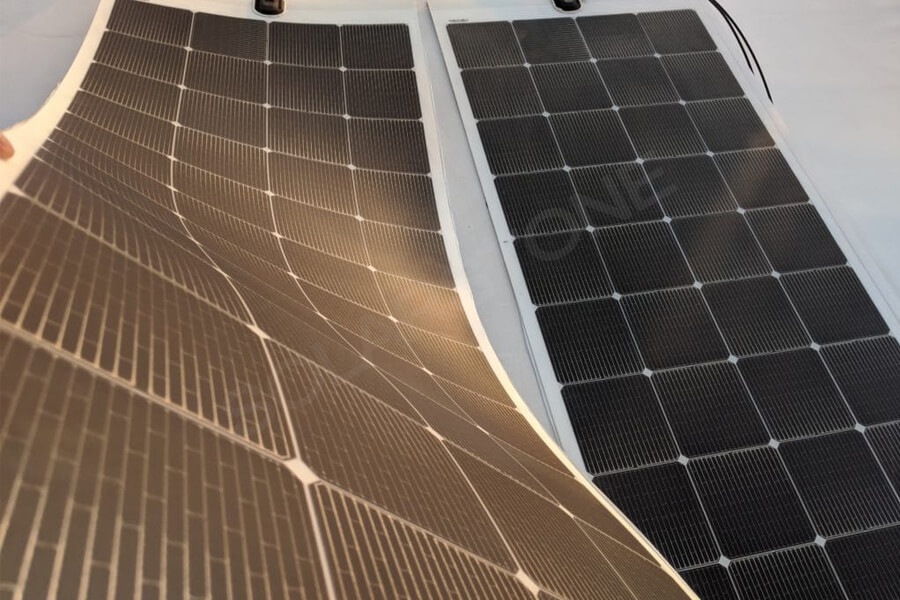Flexible solar cell is a kind of thin film solar cell with advanced technology, excellent performance, low cost and wide applications. It can be applied to solar backpacks, solar convertibles, solar flashlights, solar cars, solar sailboats and even solar aircraft. An important application field of flexible solar energy is BIPV (photovoltaic building integration), which can be integrated in windows or roofs, exterior walls or interior walls.
Compared with traditional solar panels, flexible solar panel technology makes solar panels light, portable and flexible. You can carry them with you on the journey. In fact, their portability is their main selling point. The price of 100-watt flexible solar panels on the market is less than $100.
Although there are quite obvious surface differences, flexible solar panels work very similar to traditional solar panels because they are based on the same photovoltaic technology – the ability of materials to generate solar energy from absorbing direct sunlight.
In fact, all forms of solar panels are strategically manufactured in dark blue/black tones to absorb the maximum amount of sunlight (in the daytime), which will result in higher power generation.
Although the traditional solar panels used for power supply of residential and commercial complexes are larger in size and power, so their volume is huge, flexible solar panels are designed to meet the low wattage power demand, usually with a capacity of 50 to 300 watts. In addition, this can be stored in the battery for future use.
For this reason, they are a particularly useful mobile power supply that will come in handy when you are on the road. Therefore, they can be comfortably used in motorhomes, boating equipment, marine equipment (including large yachts), camping trips, long-distance trips, and even as your daily use of the main power source of life away from the power grid.
Advantages:
1. As an environmental protection energy bank (requires batteries)
2. Lightweight and portable, small in size, most of which can be put into pockets.
3. Compared with traditional (flat) solar panels, they can be bent enough to achieve multi-function
Disadvantages:
1. Generally, the size is small, so the power generation and storage are limited. Even if the efficiency is up to 25%, you can only get about 300 watts of flexible solar panels.
2. Not as durable as solar panels. For example, even high-quality solar panels can only provide a 5-year product warranty, while traditional solar panels can easily have a service life of 20-25 years.


